Spinning a Yarn
At this point, I’ve been spinning for over a decade. I was very lucky to have a local yarn shop, Mad About Ewes, in my college town. In addition to teaching various knitting classes, Libby, the owner, taught spinning. So one spring weekend, I spent the day learning to spin. Totally normal for a college sophomore, right?
The first part of the lesson was on a drop spindle, which helped me understand how to draft the fiber and how twist travels through the yarn. The advantage of a drop spindle is that you can spin it, stop the spin, and then pull on the fiber (called drafting) and to let the stored twist travel upwards into the fiber to make the yarn. Once you’re comfortable with that, you can move on to keeping the spindle spinning while you draft and let the twist travel. Once this process has created some yarn, you wind it onto the spindle and keep going.
After I had those things under control, I got to move over to a spinning wheel. Pushing on the pedal(s) turns the wheel, which rotates the flyer (the Y-shaped bit with hooks that’s held between two uprights) and bobbin. The relationship between flyer and bobbin speed affects how much twist is added to the fiber and how fast it winds on to the bobbin. I’m not always the most coordinated person, so getting my feet to treadle at the right speed, while controlling the twist going into the fiber and winding onto the bobbin was a little challenging. Because the twisting and winding on happens in the same step, spinning on a wheel is faster than spinning with a spindle.
By the end of that day, I had a bit of yarn that I’d made. It was thick and thin and over and under twisted, but I’d managed to make something. I wanted to keep spinning, so I started trying to figure out how to get a spinning wheel.
Because I had an on-campus job and then summer jobs, I was able to make enough money to buy myself a wheel – an Ashford Traveller. Because the wheel I bought was unfinished, I spent a couple days applying wax to the wooden parts before assembling it to spin. This wheel was a fixture in my college dorm room and my apartment during grad school. I also got a second drop spindle while in college – I wanted a lighter spindle so I could spin fine yarns.
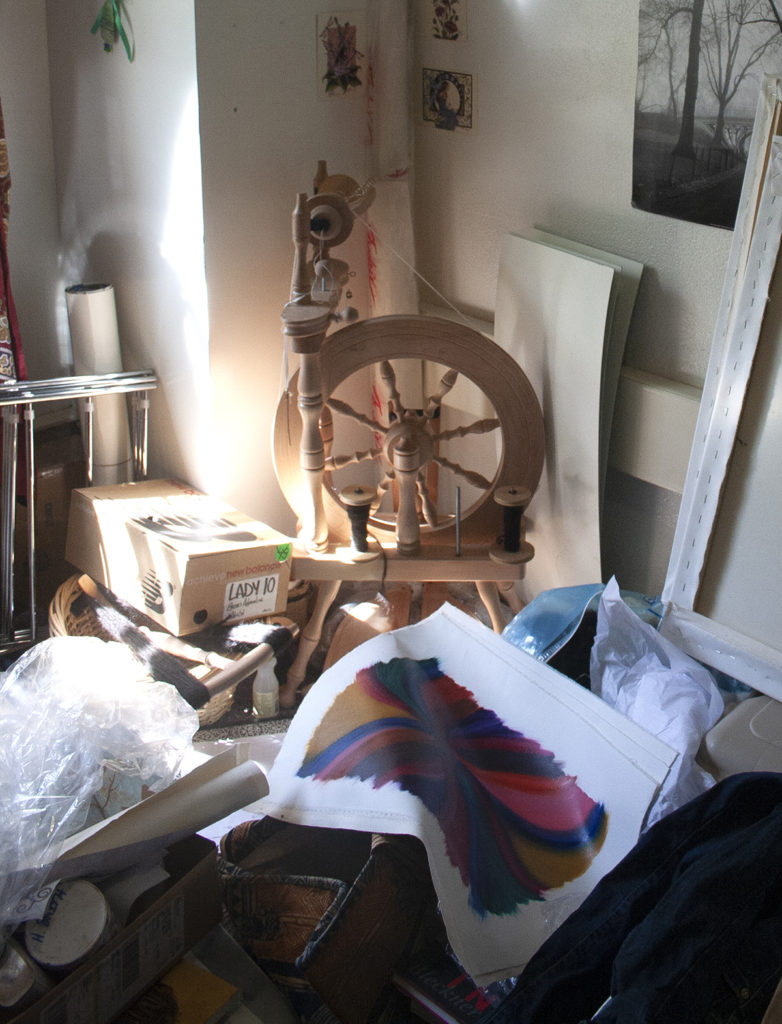
It wasn’t until a couple years ago that I purchased another spinning wheel (or three). The first was a flax wheel that I purchased from a friend who was moving. This slanty has become my primary living history wheel, due to it’s ease of transport and striking appearance.
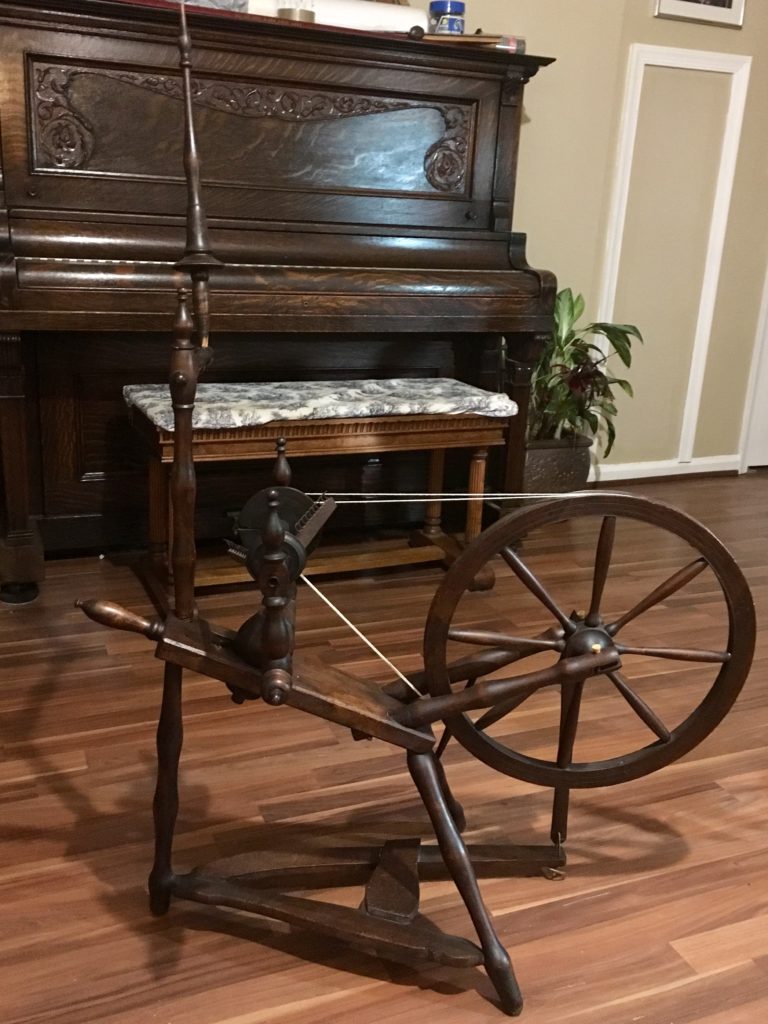
The next wheel I purchased was a great wheel. I’m still learning the quirks of spinning on this type of wheel. There is no treadle, so you have to turn the wheel by hand. You also have to change where you hold your hand to add twist to fiber and wind the yarn onto a spindle.
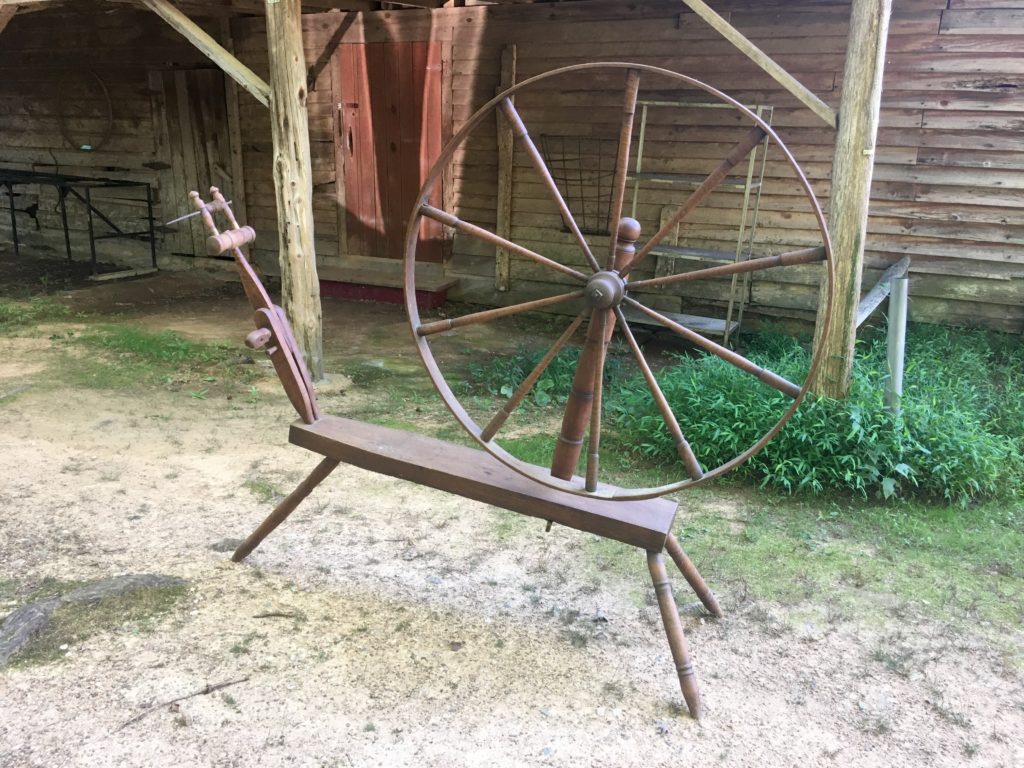
The most recent purchase is slightly larger than the slanty. It’s also my first wheel that requires repairs before use. Both the flyer and wheel need to be reattached to their axles, and it needs a good cleaning. I’ll post photos of this wheel once it’s cleaned up a bit.
At some point, I’ll do dedicated posts on each of the recently purchased wheels. They’ve each got interesting stories.
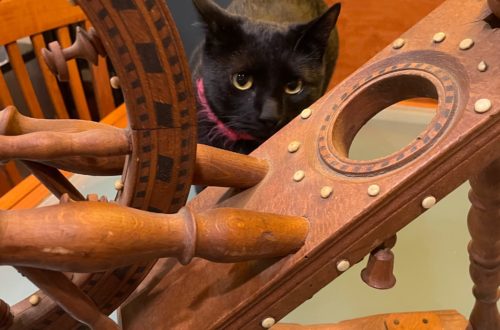
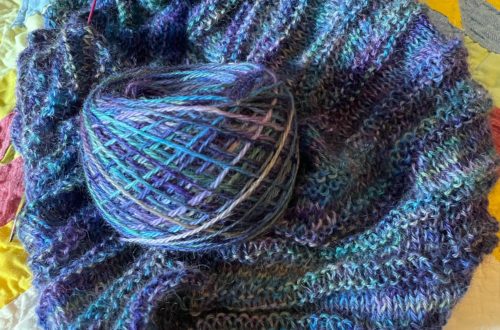
One Comment
Brenda
Welcome to the world of blogging. I’m always delighted to see another blogger who is besotted with antique spinning wheels. I’m looking forward to reading your future posts!